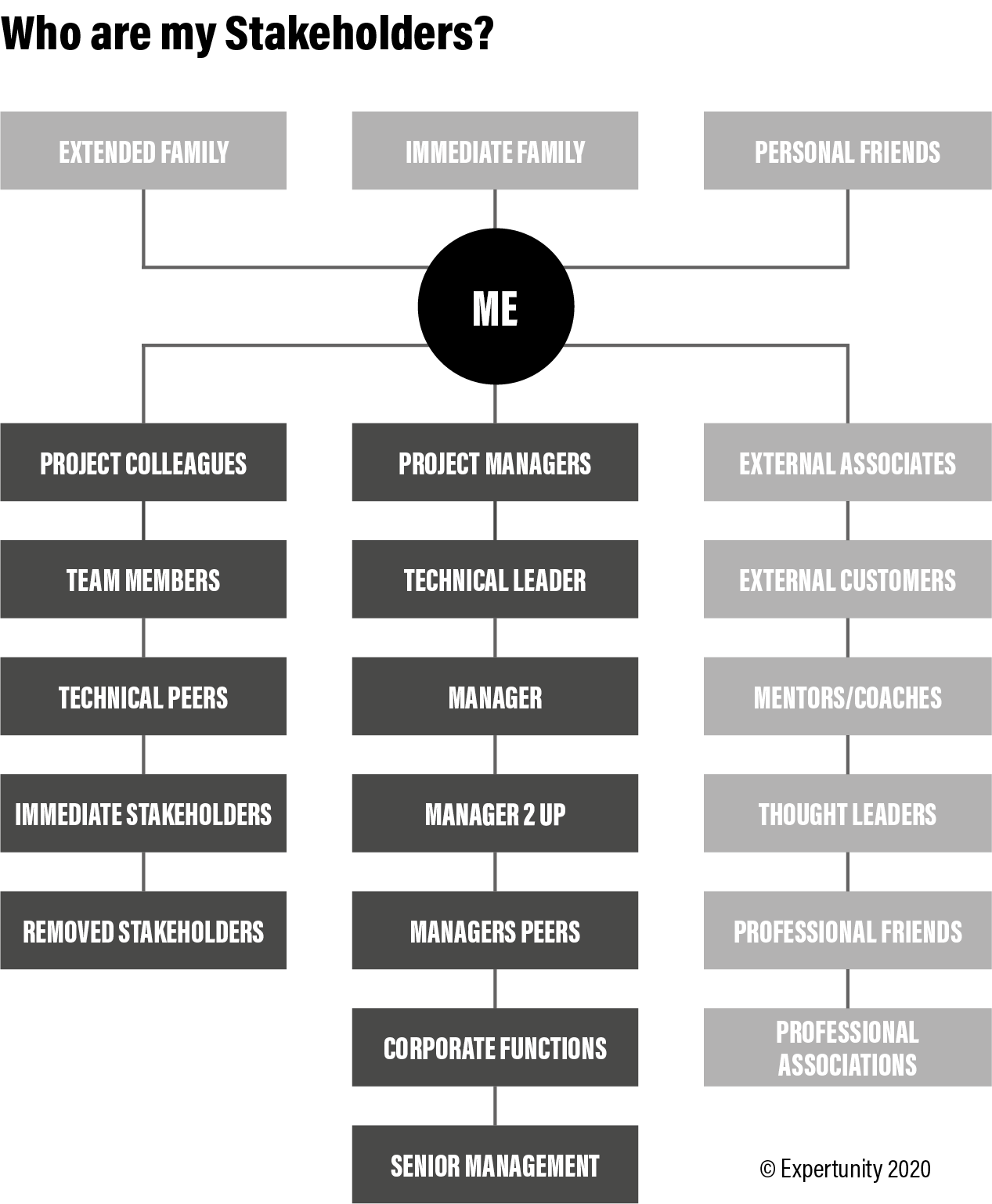There are at least 80 people in your network who can ruin your day.
Let’s be more specific. If you’re an individual contributor like a developer, economist, scientist, or engineer, you may think you work largely on your own.
Maybe in a small team in a big corporate — but even then, largely on your own.
In reality, most technical experts have 80, and probably closer to 100 stakeholders.
Approached badly, any one of them can decide to throw your business, your project, or you yourself under the bus.
But they can also help enormously in your work and your career.
How do you get on the good side of stakeholders, so they help you? And how do you identify and prioritise the most important?
This is a how-to guide for people we call experts: individual contributors, indie hackers, technical specialists and subject matter experts. In corporates, it’s independently minded medical researchers and specialists, scientists, developers, data scientists, physical engineers, production-line specialists, and more.
The techniques work for people managers and non-experts as well. But we’re particularly encouraging technical teams and entrepreneurs to work through a five part action plan.
Think hard about whether you’re getting the value you need from your stakeholders. And make sure stakeholders aren’t going to unexpectedly ruin your day.
Start here: how to brainstorm a stakeholder map
To start, let’s consider a workshop we ran several years ago. “Who are your stakeholders?” It sounded like a simple question to Chiang Yu Mei, an engineer based in Singapore. She quickly drew up a stakeholder map containing 32 people.
You have a lot more stakeholders than you think
But when presented with others’ maps, Yu Mei realised she’d missed a few important people — her family, for instance. Plus her manager’s manager, the entire project team she had worked with the previous quarter, her friends from the national engineering body, and her past manager who had moved companies.
Now Yu Mei had a complex web of relationships comprising over 80 people. And every few minutes, she was adding further stakeholders that she had forgotten.
Then we asked Yu Mei who she interfaced with in her organization, but outside of Singapore. That was another 20 colleagues, from New Zealand to Japan to India.
Yu Mei’s experience is typical. Your initial brainstorm of a stakeholder map, followed by considering who you’ve missed, will identify a network of 70 to 90 people.

But they’re not the only people you missed…
Our next challenge for Yu Mei was this: “Who would you like to have on your stakeholder map who isn’t there today? Why?” Ask yourself these questions:
-
What important meetings do I want to be involved with in three years’ time? Who else will participate?
-
Who will be the leading lights in my technical field in three years’ time? Are they on my radar now? Are they included in my map?
-
Who will be my most important stakeholders in three years’ time? How long will I have known them? Where and how will we have first met?
And if you’re not working for yourself, don’t forget:
- Who do I want as my manager in three years’ time?
Yu Mei had to consider who she hadn’t met yet but ought to be on her stakeholder map. And she had to consider how she might go about meeting those people, such as through networking or outreach.
(One participant delighted us by adding the name of an as yet unborn grandchild because he knew in his heart that once that child had arrived, they would be an extremely important stakeholder in his life.)
Now you have a stakeholder map, prioritise, run health checks and plan your next actions
Expert stakeholder maps are usually complex. Indie hackers aren’t quite sure who’s going to move the needle for their business. Individual contributors move round their organization, and have to influence different levels of the organisational hierarchy in many different ways.
You’ve just completed stage one of a five stage process to make sure stakeholders want to help you.
-
Identify all your stakeholders to add to the map, including future stakeholders (done!)
-
Prioritise the most vital relationships
-
Run stakeholder health checks. Identify the important relationships to optimise. Check for conflict between their needs, expectations and agenda, and yours.
-
Future-proof. Identify stakeholders who aren’t yet on your map who you will need in the future.
-
Plan action to optimise the leverage you get from stakeholders, and they from you.
We’ll outline steps 2–5 in detail in future articles. But to not leave you hanging, here’s a set of questions to ask in the meantime.
-
Have I conducted a thorough analysis of who my most important stakeholders are? Including who they should be? Have I spent enough time with those stakeholders to understand what they want from me? Have we had a big-picture conversation, not just a discussion of work in progress?
-
How would I measure whether I add value to the right stakeholders, for the right reasons, at the right time? To what extent do I have a clear sense of purpose and mission in my role? To what extent do I articulate a clear purpose — particularly when I need to re-prioritise work with integrity?
-
Do I spend enough time thinking about where I spend my time, as well as who and what I spend it and why? As priorities change, do I adapt quickly enough? Do I communicate these changes broadly enough?
In the next article, we’ll explain how to use a Stakeholder Health Check — like this form you see below.

This article is drawn from How to be a Master Expert, a new 50-chapter guidebook to learn every skill a technical expert needs to succeed in a very non-technical world. Where to buy Master Expert
Download the book’s first chapter on stakeholders below.


